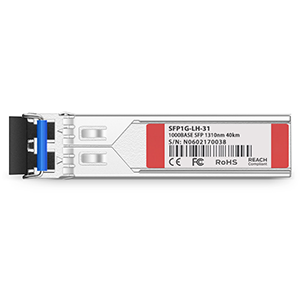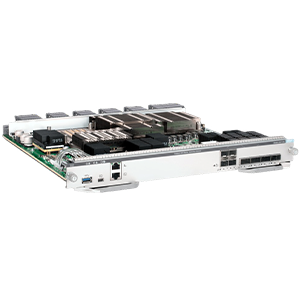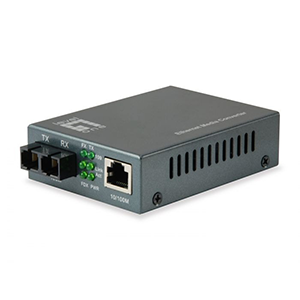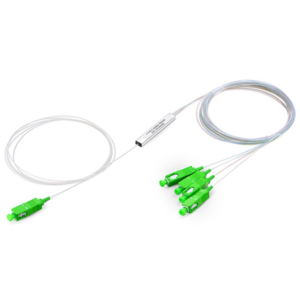Thank you for choosing to read this article. Today I will introduce to you the 10G ER SFP optical module and its important role in high-speed data transmission. The 10G ER SFP optical module is a fiber optic module specially designed for long-distance optical fiber transmission. It has high performance and reliability and is suitable for various long-distance data transmission needs.
Overview of 10G ER SFP optical module
10G ER SFP optical module is a fiber optic module used for high-speed data transmission, mainly used for long-distance fiber optic transmission applications. ER stands for “Extended Reach”, which means it has longer transmission distance capabilities.
The 10G ER SFP optical module adopts SFP (Small Form-factor Pluggable) packaging. It is a hot-swappable optical module that can be directly inserted into the optical module slot of compatible network equipment. It supports data transfer rates of 10Gbps and is suitable for transmission using single-mode fiber.
In long-distance optical fiber transmission, 10G ER SFP optical modules have some important applications and advantages:
-
Long-distance transmission capability: 10G ER SFP optical module is suitable for optical fiber transmission that needs to span longer distances, and can usually cover transmission distances of tens of kilometers. This makes it useful in applications such as remote communications and WAN connectivity.
-
High-speed data transmission: 10G ER SFP optical module supports data transmission rates up to 10Gbps, making it suitable for applications requiring large bandwidth and high-speed transmission, such as data center interconnection, video streaming, and large-scale file transmission.
-
Single-mode optical fiber compatibility: 10G ER SFP optical module uses single-mode optical fiber for transmission and is compatible with single-mode optical fiber networks. Single-mode optical fiber has small transmission loss and high bandwidth capacity, and is suitable for long-distance transmission.
-
High reliability and stability: The 10G ER SFP optical module has undergone rigorous testing and verification, and has stable performance and high reliability. It uses advanced optics and circuit design to ensure a stable data connection over long distances.
Transmission distance specifications of 10G ER SFP optical module
The transmission distance specifications of 10G ER SFP optical modules are usually expressed in kilometers (km). The transmission distance specification refers to the maximum distance that an optical signal can be transmitted in an optical fiber. Exceeding this distance may cause signal attenuation and a decrease in transmission quality.
Generally speaking, the transmission distance specification of 10G ER SFP optical module is between 40 kilometers and 80 kilometers. This means that under appropriate fiber conditions, the optical module can achieve reliable data transmission within this range.
It should be noted that 10G ER SFP optical modules of different manufacturers and models may have different transmission distance ranges. This is because different design and manufacturing techniques may affect the transmission performance and distance capabilities of the optical module. Therefore, when selecting and using 10G ER SFP optical modules, you need to carefully review the specifications and data sheets provided by the manufacturer to ensure that they meet specific application requirements.
In addition, the actual transmission distance is also affected by other factors, such as the quality of the optical fiber, the quality of the connector, the attenuation in the optical fiber link, etc. Therefore, when deploying 10G ER SFP optical modules, these factors need to be considered and appropriate testing and verification performed to ensure that the transmission reliability and performance are as expected.
Transmission distance and fiber type of 10G ER SFP optical module
There is a close relationship between the transmission distance of the 10G ER SFP optical module and the type of optical fiber used. Optical fiber types are mainly divided into single-mode fiber (SMF) and multi-mode fiber (Multi-mode fiber, MMF). They have certain differences in transmission distance.
10G ER SFP optical modules are usually used for long-distance transmission and are suitable for applications that need to cover tens of kilometers of transmission distance. In this case, single-mode optical fiber is generally used for transmission. Single-mode fiber has a smaller core diameter, and optical signals experience less diffraction and attenuation when transmitted in it, making it suitable for long-distance transmission. The combination of 10G ER SFP optical module and single-mode optical fiber can achieve longer transmission distances, usually between 40 kilometers and 80 kilometers.
In comparison, multimode fiber has a relatively short transmission distance. The core diameter of multimode optical fiber is large, and there are multiple modes for transmitting optical signals, which is prone to modal dispersion and attenuation. Therefore, for long-distance transmission, multimode fiber is not suitable for use with 10G ER SFP optical modules.
It should be noted that in addition to the transmission distance, the fiber type also affects the compatibility and maximum transmission rate of the optical module. Generally, 10G ER SFP optical modules are compatible with single-mode optical fiber and can achieve a data transmission rate of 10Gbps.
Multimode optical fiber is usually used for short-distance transmission, such as interconnection within data centers. The commonly used optical module is 10GBASE-SR, which can achieve a data transmission rate of 10Gbps. Therefore, in order to obtain the best transmission performance and distance, single-mode optical fiber compatible with 10G ER SFP optical module should be selected, and the quality of the optical fiber and the reliability of the connection should be ensured.
Application scenarios of 10G ER SFP optical module
10G ER SFP optical module is suitable for a variety of long-distance data transmission needs. The following are some practical application scenarios:
-
Data center interconnection: In large data centers, high-speed and reliable data transmission is required between different servers and storage devices. 10G ER SFP optical modules can be used to connect long-distance data centers, providing high-bandwidth and low-latency connections to support fast data transmission across devices.
-
WAN connection: In the Wide Area Network (WAN), data transmission needs to be carried out between offices, branches or data centers in different geographical locations. 10G ER SFP optical modules can be used to establish long-distance point-to-point connections to achieve high-speed data transmission and remote collaboration.
-
Long-distance communication: In telecom operators, Internet service providers or enterprise networks, 10G ER SFP optical modules can be used for long-distance communication applications. For example, connecting network nodes in different cities or countries, transmitting high-quality audio and video streams, supporting remote monitoring and video conferencing, etc.
-
Banks and financial institutions: Banks and financial institutions often require secure data transmission between different locations to support remote transactions, data backup, disaster recovery, etc. 10G ER SFP optical module can provide high-speed and stable data connection to ensure data security and reliability.
Performance requirements of 10G ER SFP optical module
Factors that affect the transmission distance of 10G ER SFP optical modules include optical power, link quality and fiber attenuation. Below is an exploration of these factors and the corresponding performance requirements to ensure stable data transmission over a specific distance:
-
Optical power: Optical power refers to the intensity of optical signals sent and received by the optical module. For 10G ER SFP optical modules, the output optical power of the transmitter should meet the specification requirements, usually between -1 dBm and +4 dBm. The sensitivity indicator of the receiving end describes the minimum optical power level that the optical module can receive. To ensure stable data transmission, the sensitivity of the receiving end should be high enough to receive the optical signal sent by the transmitting end.
-
Link quality: Link quality refers to the connection quality between the optical module and the optical fiber link. It is affected by components such as connectors, attenuators, and optical splitters. Good link quality can ensure the transmission quality and stability of optical signals. When using 10G ER SFP optical modules, you need to ensure that the connectors are of good quality, that there are no loose or damaged connectors, and that appropriate accessories and connection methods are used.
-
Fiber attenuation: Fiber attenuation is the signal loss during the transmission of optical signals in optical fibers. Attenuation depends on the characteristics of the fiber itself, the length of the fiber, and the insertion loss of connectors and other components. 10G ER SFP optical modules are usually used for long-distance transmission. Therefore, low attenuation single-mode fiber should be used when selecting optical fiber, and ensure that the total attenuation in the optical fiber link is within the specified range to ensure signal transmission distance and quality.
Development Trend of 10G ER SFP Optical Modules
As a high-speed optical module, the development trend of 10G ER SFP optical module is mainly focused on increasing the transmission rate and extending the transmission distance. The following is a discussion on the development trends of 10G ER SFP optical modules:
-
Higher transmission rate: As the demand for higher bandwidth in data centers and network applications continues to grow, the future development trend will be to increase the transmission rate of 10G ER SFP optical modules. For example, 25G, 40G, 100G and higher rate optical modules have appeared on the market, which can provide higher data throughput and faster transmission rates. These new optical module standards and technologies will provide better support for high-bandwidth applications.
-
Longer transmission distance: As network coverage continues to expand, the demand for long-distance transmission is also increasing. Traditional 10G ER SFP optical modules can support transmission distances of 40 kilometers to 80 kilometers, but future development will further expand the transmission distance. For example, the 100G ER4 optical module has achieved a transmission distance of 40 kilometers, and the emergence of new technologies and standards may push the 10G ER SFP optical module to achieve a longer transmission distance.
-
Application of emerging technologies: Emerging technologies are also an important development trend in improving and expanding the transmission distance of 10G ER SFP optical modules. For example, Wavelength Division Multiplexing (WDM) technology can transmit multiple optical signals on the same optical fiber through different wavelengths, improving fiber utilization and transmission capacity. At the same time, Forward Error Correction (FEC) technology can improve the transmission quality and reliability of optical signals and further extend the transmission distance.
Summarize:
In the future, 10G ER SFP optical modules are expected to achieve higher transmission rates and longer transmission distances. With the development of emerging technologies, it will continue to be improved and expanded to meet the growing communication needs.
If you are interested in 10G ER SFP optical modules, please consider contacting us, we will provide you with professional advice and support to help you choose the 10G ER SFP optical module solution that suits your needs to achieve high-speed, reliable long-distance data transmission.
- What is the range of 10G ER SFP?
- What is SFP+ ER?
- What is the difference between SFP-10G-LR and SFP 10G LRM?
- What does 10G SFP mean?
- What is 10G SFP 100km?
- Can 10Gb SFP run at 1gb?
- Is SFP 10G SR single-mode or multimode?
- Will a 10G SFP run at 2.5 g?
-
25G SFP28 1310nm 10km LC Optical Transceiver Module
-
25G SFP28 1310nm 30km LC Optical Transceiver Module
-
25G SFP28 850nm 100m LC Optical Transceiver Module
-
25G SFP28 850nm 300m LC Optical Transceiver Module
-
25G SFP8 1300nm 80km LC Optical Transceiver Module
-
25G SFP8 1310nm 40km LC Optical Transceiver Module





